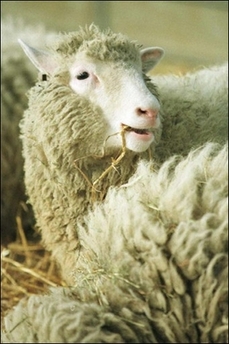Dolly creator gives up cloning technique
Updated: 2007-11-17 21:56
LONDON - The Scottish scientist who created Dolly the sheep more than a decade ago said he is abandoning the cloning technique that he pioneered, according to an interview published Saturday.
 Dolly, the cloned sheep at the Edinburgh Institute, 1997. The Scottish scientist who created Dolly said he is abandoning the cloning technique that he pioneered, according to an interview published Saturday. [Agencies] |
Ian Wilmut, who led the team that created Dolly in 1996, told The Daily Telegraph that he is abandoning cloning to pursue a new technique that can create stem cells without an embryo.
Wilmut's announcement could mark the end of therapeutic cloning, in which DNA is inserted into an unfertilized egg, an embryo is produced and stem cells are harvested, the newspaper said. Tens of millions of dollars have been spent worldwide on therapeutic cloning research in the past decade, but nobody has made it work in humans.
Wilmut believes a rival method pioneered in Japan that creates stem cells from fragments of skin is better for growing tissue that can be used to treat people who are paralyzed or have illnesses ranging from diabetes to Parkinson's disease.
He said the Japanese method does not require human eggs, making it "easier to accept socially" than his Dolly method, known as "nuclear transfer." The Japanese method removes the need to destroy embryos — an action many people oppose and that has become a major stumbling block for funding and regulating research.
"I decided a few weeks ago not to pursue nuclear transfer," Wilmut was quoted as saying.
Wilmut said he was inspired by Shinya Yamanaka of Kyoto University in Japan, who published a landmark paper last year, explaining how by slipping four genes into mouse skin cells called fibroblasts, he could make the altered cells behave much like embryonic stem cells in lab tests, the newspaper said.
|
|
|
||
|
||
|
|
|
|